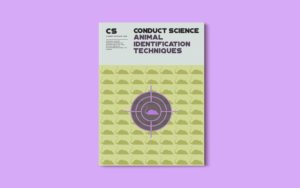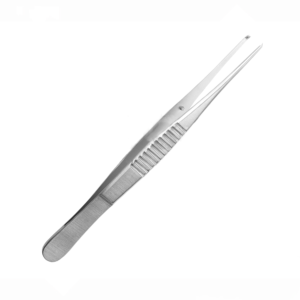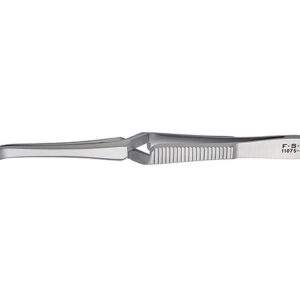Overview of Colorimetry
Colorimetry, as the name suggests, means the measurement of colors. In terms of chemical analysis, it is, more specifically, the measurement of the concentration of a particular compound (solute) in a colored solution (solvent). During scientific work, we often need to measure quantities of a particular compound in a mixture or the concentration of the solution. The trick is to identify the difference in colors of various mixtures and ascertain their absolute values. This is more informative and scientifically useful than simply having subjective judgments such as solutions being light or dark in color.[1]
Our eyes are not good enough to distinguish finer differences in colored solutions!
Light in the form of electromagnetic radiation enables a human eye to visualize objects. Visible light is measured in terms of wavelengths in the range of 400-700nm.[1][2] Scientists have identified that the human eyes have 3 different types of cone cells which helps perceive color. This phenomenon is called Trichromacy.[3] In order to create different colors, a human eye needs three different wavelengths of light; blue (short range), green (medium range), and red (long range).[4] There is a threshold beyond which the human eyes are not sensitive enough to distinguish small changes in the colors of a solution. Therefore, there is a need for a more sensitive measuring instrument which could give reliable and consistent results. This instrument is known as a Colorimeter. In determining the concentration of a solute in a solution, the Beer-Lambert law is used.
The Beer-Lambert law
The first criterion for measuring the amount of solute in a given solvent is that the solution must be homogeneous. When a ray of light passes through the solution, a part of the light radiation is absorbed by the solution. The amount of light absorbed and transmitted is defined by the Beer-Lambert law.[5][6] This law is actually a combination of two different laws i.e., Beer’s law and Lambert’s law. Briefly, Beer’s law states that when a parallel beam of monochromatic light (i.e., having only one wavelength) passes through a solution, the amount of light absorbed by the solution is directly proportional to the amount of solute in the solution. Lambert’s law states that the absorbance of light by a colored solution depends on the length of the column and the volume of liquid through which light passes.
Beer and Lambert’s law draw links between light absorbed by the sample, the path it travels across the sample, and the concentration of the sample itself.
Mathematically, the equations of the Beer-lambert law can be described as follows; let’s assume that the ray of light of a particular wavelength has an intensity “Io” and after it has passed through the solution, the intensity is now “Ia”, while the solution has absorbed a portion of the intensity “Ib”. The following equation demonstrates the above phenomenon:
Io= Ia + Ib
The amount of light absorbed by the solution is directly proportional to the concentration of solute in the solution and the path length of the cuvette through which the light travels. This relationship between the absorption of light and the concentration of the solution is defined in Beer-Lambert’s law:
A= edC
Where,
A= Absorbance
e= Molar absorptivity (a measure that shows how well a solution absorbs light of a particular wavelength) (in mol L-1cm-1 )
d= Path length of the cuvette (in cm)
C= Concentration of the solute in solution (in mol L-1)
Once the light passes through the solution, it is collected into a detector. The relationship between the light that passed through the solution (I) and the original light applied on the sample (Io) is shown by the following formula:
T= I/ Io
Where, T= Transmittance (amount of light that passes through a solution)
The above two equations are represented in form of Absorbance (A) as follows:
A= -log10(I/ Io) = – log10 T
Absorbance is more commonly used than transmittance when determining the concentration of a solute in a solution.
Beer-Lambert law only holds true in the following scenarios;
- The light passing through the sample must be monochromatic (of a single wavelength.[6]
- The solution must be homogeneous. If not, at high concentrations, the molecules may aggregate and this would lead to incorrect readings.
- The solution must not have a molecule that emits fluorescence when excited. If it does, then this can lead to erroneous readings.
- The temperature of the solution must not change, as the molar extinction coefficient depends on it.
The Components of a Colorimeter
The Colorimeter is the instrument used to ascertain the concentration of a solution by measuring the amount of absorbed light of a specific wavelength. One of the earliest and popular designs, Duboscq Colorimeter, invented by Jules Doboscq, dates back to the year 1870. A colorimeter has the following components; [7][8]
Ø A light source to illuminate the solution – usually a blue, green, and red LED.
Ø Filters for red, blue, and green wavelengths of light.
Ø A slit to focus beam of light.
Ø A condenser lens which focuses the beam of light into parallel rays.
Ø A cuvette to hold the solution. This is made either of glass, quartz, or plastic.
Ø A photoelectric cell, which is a vacuum filled cell used to measure the transmitted light and convert it into electrical output. These are made of light sensitive material such as selenium.
Ø An analog (e.g., a galvanometer) or digital meter to display output as transmittance or absorbance.
How does the Colorimeter work?
Having discussed the principles and components of a Colorimeter, it is time to look into the functionality of a colorimeter,[9] as follows;
- The process starts with white light being emitted from the LED or tungsten lamp.
- This light is passed through a slit and is focussed into a parallel beam by a condenser lens.
- This beam passes through a series of lenses, which focuses a particular wavelength of light on the solution.
- The solution under question is held in a cuvette of a given path length (width of the cuvette). A part of the light is absorbed and the rest is transmitted from the solution.
- This transmitted light falls on the photoelectric cell/photodiode, where the intensity of this light is converted into an electrical signal which is registered by an analog (e.g., a galvanometer) or by a digital meter. These readings can be obtained within a second.
Important considerations about the above method for getting optimal results
- Sample container should be made of glass or plastic for visible range of light and of quartz for U.V range. This is because glass absorbs U.V radiation.[9]
- The wavelength at which maximum absorption occurs, for the solution in question, should be selected for the analysis. It has been shown experimentally that the absorbance at this wavelength is more stable than at other wavelengths.
- The samples should be adequately diluted to avoid high absorbance value which could lead to incorrect estimation of the concentration.
- Stray light, either emerging from within the colorimeter due to an issue with the optics or from outside due to inadequate sealing would influence the reading in the meters.
Standard solutions for finding unknown concentrations
A point to note is that the value obtained in the meter does not have any meaning since it is coming from a solution having an unknown concentration. We cannot translate that value into a concentration value because we do not have a pre-set reference. In order to identify the concentration of the solution, we need to quantify a standard of known concentrations. Standard solutions of various known concentrations are prepared and the absorbance is observed for each solution. A standard curve is drawn with these values, usually with absorbance on the Y axis and the concentration of the solution on the X axis. Using this method, the transmittance value for the solution can be used to extrapolate its concentration.
Uses of a Colorimeter in the real world
- Colorimeters are widely used for monitoring the growth of bacterial or yeast cells in liquid cultures.[10]
- They are used for quarantine purposes in the food industry where the color of food and beverages are monitored.[11][12] Color additives are often added to food as a compensation for the loss of natural color of the food due to exposure to light and air. It is important to ensure that these artificial colors are of adequate amount to ensure health and safety.
- They are used to detect plant nutrients in the soil.[13]
- They are used to screen chemicals in water such as chlorine, nitrite, fluoride, cyanide, iron etc. [14][15]
Is there a better Instrument than the Colorimeter?
The spectrophotometer is the answer to that question. A spectrophotometer is like a colorimeter, in that it is also used in studying colored solutions, however, it is a bit more advanced. The Colorimeter, no doubt, is a fast, inexpensive way to quantitate solutes in a solution. However, like all techniques, this instrument also has some drawbacks,[9] as follows;
- A wide range of wavelengths cannot be used in colorimetry, as the colorimeter is restricted to only a few wavelengths. The spectrophotometer, on the other hand, uses a monochromator instead of filters and it can be used in Ultra Violet (UV) and Infra-red (IR) wavelength as well. Therefore, the spectrophotometer provides more precision in terms of the wavelengths being used for analysis.
- Spectrophotometers are more precise and accurate than colorimeters.
- Both colored and colorless solutions can be analyzed in spectrophotometers, whereas only colored solutions can be analyzed in colorimeters.
Other related Instruments to a Colorimeter
- Densitometer: This device is used for quality control of colors in a printed material. It is also used for medical diagnosis, where human tissues are exposed to radio-labeled ligand.[16]
- Spectroradiometer: This device is used for measuring the electromagnetic energy reflected or emitted from the earth’s surface.[17]
Technological advancements make the Colorimeter more convenient
As technology progresses, so does the technical advancements in the field of colorimetry. There are now more sophisticated colorimeters than the Duboscq Colorimeter. Also, there now exists a smartphone app to do colorimetry, making the process more convenient and inexpensive.[18][19]
Conclusion
Colorimetry is a very quick and efficient way of analyzing colored solutions or any colored substance. Decades of research has enabled development of high end colorimeters which are more precise and convenient to use. The immense potential of colorimetry in terms of applications ranging from food, textiles, soil, and scientific research proves that this technique will not be getting redundant any time soon.
References
- C. Oleari, Standard colorimetry: definitions, algorithms, and software, Wiley, West Sussex, England, 2016.
- D.H. Sliney, What is light? The visible spectrum and beyond, Eye (Lond). 30 (2016) 222-229.
- B.B. Lee, The evolution of concepts of color vision, Neurociencias, 4 (2008) 209-224.
- P.K. Brown, G. Wald, Visual Pigments in Single Rods and Cones of the Human Retina. Direct Measurements Reveal Mechanisms of Human Night and Color Vision, Science, 144 (1964) 45-52.
- D.F. Swinehart, The Beer-Lambert law, J.Chem.Educ, 39 (1962) 333-335.
- W. Mantele, E. Deniz, UV-VIS absorption spectroscopy: Lambert-Beer reloaded, Spectrochim Acta A Mol Biomol Spectrosc, 173 (2017) 965-968.
- G.C. Anzalone, A.G. Glover, J.M. Pearce, Open-source colorimeter, Sensors (Basel), 13 (2013) 5338-5346.
- F.A. Settle, Chemical instrumentation, evolution of instrumentation for UV- visible spectrophotometry, J.Chem.Edu., (1986).
- A.K.R. Choudhuty, Color measurement instruments, Principles of Color and Appearance Measurement, (2014) 221-269.
- J. Wen, S. Zhou, J. Chen, Colorimetric detection of Shewanella oneidensis based on immunomagnetic capture and bacterial intrinsic peroxidase activity, Sci Rep, 4 (2014) 5191.
- J.V. Popov-Raljic, J.S. Mastilovic, J.G. Lalicic-Petronijevic, V.S. Popov, Investigations of bread production with postponed staling applying instrumental measurements of bread crumb color, Sensors (Basel), 9 (2009) 8613-8623.
- J.V. Popov-Raljic, J.G. Lalicic-Petronijevic, Sensory properties and color measurements of dietary chocolates with different compositions during storage for up to 360 days, Sensors (Basel), 9 (2009) 1996-2016.
- R.T. Liu, L.Q. Tao, B. Liu, X.G. Tian, M.A. Mohammad, Y. Yang, T.L. Ren, A Miniaturized On-Chip Colorimeter for Detecting NPK Elements, Sensors (Basel), 16 (2016).
- K.E. Quentin, Colorimetric methods for fluoride determination, Caries Res, 1 (1967) 288-294.
- Y. Suzuki, T. Aruga, H. Kuwahara, M. Kitamura, T. Kuwabara, S. Kawakubo, M. Iwatsuki, A simple and portable colorimeter using a red-green-blue light-emitting diode and its application to the on-site determination of nitrite and iron in river-water, Anal Sci, 20 (2004) 975-977.
- K.A.F.a.S.G. George W.Dauth, A densitometer for quantitative autoradiography Journal of Neuroscience Methods, 9 (1983) 243-251.
- V.I.M. R.W. Leamer, and L.F. Silva, A Spectroradiometer for Field use, Review of Scientific Instruments, 44 (1973) 611-614.
- J.I. Hong, B.Y. Chang, Development of the smartphone-based colorimetry for multi-analyte sensing arrays, Lab Chip, 14 (2014) 1725-1732.
- Y. Chen, Q. Fu, D. Li, J. Xie, D. Ke, Q. Song, Y. Tang, H. Wang, A smartphone colorimetric reader integrated with an ambient light sensor and a 3D printed attachment for on-site detection of zearalenone, Anal Bioanal Chem, 409 (2017) 6567-6574.












